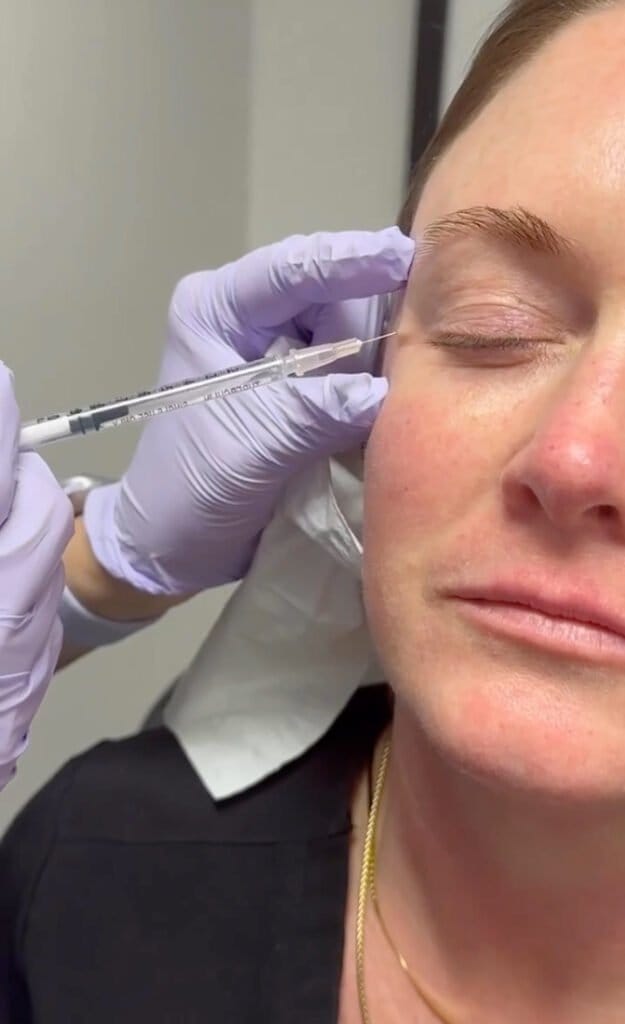How common is Botox resistance?
April 10, 2024 - Rhys Branman, MD
Botox® is the household name for injectable Botulinum toxin, or neuromodulator—by far the most popular non-invasive cosmetic treatment. Botox is injected into millions of faces each year with successful outcomes, but in certain cases, its effects start to decline over time. This phenomenon is termed “Botox resistance,” and it happens when a patient’s body develops neutralizing antibodies that prevent Botox from working.
Botox resistance is rare
According to a 2023 meta-analysis of 5,876 Botox® patients, the incidence is low, occuring in about 0.5% of patients. Luckily, we have an easy fix—simply switching the formulation of Botulinum toxin used (i.e. from Botox® to Dysport®). And, the risk of developing resistance can be reduced through a variety of techniques, including proper dosage of toxin injected and proper injection technique.

Why does Botox resistance occur?
Neuromodulator resistance is thought to occur when a patient’s body develops antibodies against the Botulinum toxin, rendering the treatment less effective or entirely ineffective over time. There are different Botox-type injectables (i.e. Dysport and Jeuveau®), and some individuals may develop resistance to one type but not another. This can be a frustrating experience for individuals seeking the anti-aging benefits of Botox, as well as for those in need of its therapeutic effects for medical conditions like cervical dystonia, hyperhidrosis, or migraines.
How can you treat neuromodulator resistance?
When a patient develops antibodies against one formula of Botox®, we can simply switch to a different formula for your next treatment. There are 5 FDA-approved brand names of injectable botulinum toxin A, and each has a slightly different accessory proteins (or none at all) so that your body is unlikely to react to a different formula the same as the one it is resistant to:
- Botox®
- Dysport®
- Xeomin®
- Jeuveau®
- Daxxify™
There are different Botox-type injectables available, and some individuals may develop resistance to one type but not another.
How can you prevent Botox resistance?
- Optimal dosing: Working with a skilled plastic surgeon, physician assistant, or nurse who is skilled in offering the minimum effective dosage can help minimize the risk of resistance.
- Spacing treatments: Increasing the interval between treatments can reduce your chance of developing antibodies.
- Switching toxin types: For patients who develop resistance, switching to a different type of Botulinum toxin may be effective.
- Alternative treatments: Exploring alternative anti-aging treatments, such as fillers, laser therapies, or other neuromodulators, can provide benefits without the risk of resistance.
What should I do if I think I have Botox resistance?
If you suspect you may be developing resistance to Botox, it’s important to discuss your concerns with your healthcare provider. They can offer guidance on the best course of action, whether it’s adjusting your treatment plan or exploring alternative therapies.
References »
Bellows S, Jankovic J. Immunogenicity Associated with Botulinum Toxin Treatment. Toxins (Basel). 2019 Aug 26;11(9):491. doi: 10.3390/toxins11090491.
Jankovic J, Carruthers J, Naumann M, Ogilvie P, Boodhoo T, Attar M, Gupta S, Singh R, Soliman J, Yushmanova I, Brin MF, Shen J. Neutralizing Antibody Formation with OnabotulinumtoxinA (BOTOX®) Treatment from Global Registration Studies across Multiple Indications: A Meta-Analysis. Toxins (Basel). 2023 May 17;15(5):342. doi: 10.3390/toxins15050342.
If you are looking for an injector with decades of experience and the highest level of training available, look no further than the medical aesthetics team at Exhale Med Spa in Little Rock. Under the direction of board-certified Little Rock cosmetic surgeon Dr. Rhys Branman, our team has many years of cosmetic injectable experience, and we are here to answer your questions and provide the best possible outcomes with neuromodulators. Call 501-227-0707 to get started, or fill out the contact form below!

